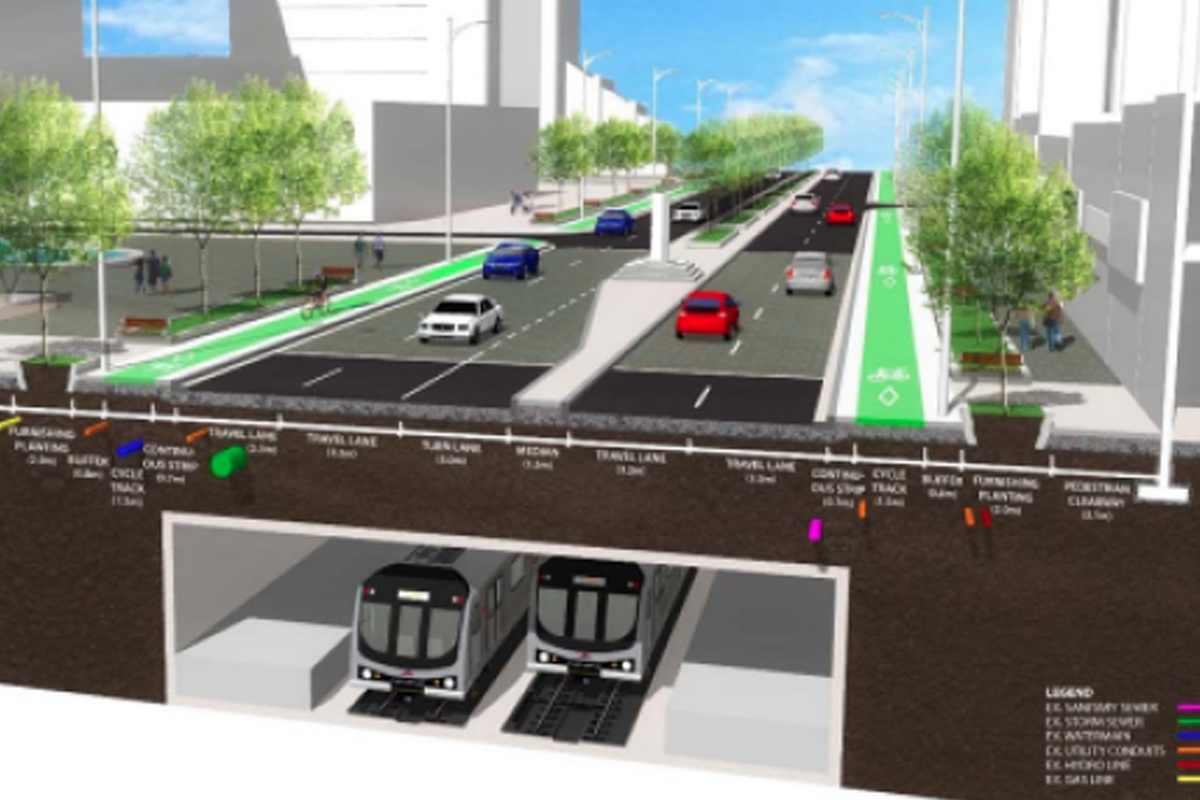
23 Mar What are we waiting for? It’s time to Transform Yonge.
Amanda O’Rourke, 8 80 Cities
Jesse James, Willowdale Community Outreach Worker, Youth Unlimited (Toronto YFC)
As the Executive Director of not-for-profit organization 8 80 Cities and as a long-time resident and Community Outreach Worker in Willowdale, our visions are for a Toronto that is safe, vibrant, and welcoming to residents no matter their age, ability or socioeconomic status.
With 8 80 Cities, we have worked with and challenged over 250 cities over the last 10 years to use the simple but powerful 8 80 concept when designing their streets and public spaces. To do this, we ask the question: what if everything we did in our cities was great for an eight-year-old and an 80-year-old? We believe if it is, it will be great for all!
With Youth Unlimited, we serve thousands of children and youth across the GTA through programs ranging from sports to mentorship to skills training. In Willowdale, we operate a Learn-2-Ride Bike Camp which trains dozens of Willowdale’s kids and youth to ride bikes in their neighbourhood. This simple – but important – skill helps them get to school, sports practices, libraries, public spaces, to meet their friends, and have fun outside. Yet every day, we witness the reality that the road and sidewalks on and around Yonge Street were built for the society of 50 years ago: kids and teens struggle to navigate the six lanes of traffic, inadequate pedestrian crossings, and lack of cycling infrastructure.
We need to build a city with thriving neighbourhoods, looking ahead to the next 50 years, or two generations. Toronto’s population is growing and changing, and it’s time our streets kept up. North York Centre is transforming into a transit-oriented and dynamic mixed-use area, but the street design has not kept pace with this evolution. North York needs a town square to which residents and visitors can travel safely, using a variety of transportation modes.
The city staff-recommended alternative for the REimagining Yonge project called Transform Yonge would finally see the stretch of Yonge Street from Sheppard Avenue to Finch Avenue unveil its true “main street” character that we know it has the makings to be. Increasingly, this area is becoming populated by residents who are less interested in owning a car, preferring instead to walk, take transit, ride a bike, and take advantage car sharing or ride-hailing services. The staff report used North York Travel Survey data to predict that by 2031, nearly two-thirds of trips will be made using non-driving modes.
In 1975 (when this section of the street was last reconstructed) Yonge Street was not designed to accommodate this much pedestrian traffic. Over the last 10 years, as the population in North York has increased, we have seen more people getting hit by drivers when they are walking. We also know that children and youth, and older adults are some of the most vulnerable road users, and more likely to be seriously injured or killed when hit by a vehicle. By reducing the car travel lanes, widening sidewalks, improving crossings, adding street furniture and street trees, and creating a more welcoming public realm, the Transform Yonge design option is the equitable choice, the economical choice, the obvious choice. But don’t just take it from us. Transform Yonge is the recommended design option by city staff, who conducted a thorough study examining metrics including safety, capital costs, conditions for walking and bicycling, congestion management, parking, and maintenance.
Transform Yonge is a shining example of a project that supports the vision and plans adopted by the Mayor and City Council. To name a few, Toronto’s Official Plan, the Vision Zero Road Safety Plan, Complete Streets Guidelines, Transform TO, , the Toronto Seniors’ Strategy, The Healthy City Plan, the Growth Plan for the Greater Golden Horseshoe, and the Provincial Policy Statement all point to the urgent need to design streets for people – streets that are healthy, safe, welcoming, and veritable places to spend time in, not just to move through.
This project is not just about Yonge Street itself. It is about what kind of city we want to be. Do we want to be known as a city trapped in the old ways of thinking about our streets, or a 21st-century city adapting and changing to new demands, new demographics, and new priorities? This is a huge decision that will affect the quality of life of Toronto residents for generations. We find it fitting that the name of the Environmental Assessment Study for this section of Yonge Street was entitled Reimagining Yonge. It speaks to the importance of opening minds and doing away with outdated ways of thinking. When we look back on this decision, we hope that we can say that we made a bold move to create a street for people instead of keeping the status quo: a dangerous highway for cars. A failure to support transforming Yonge is a failure of imagination for what’s possible for our streets and what’s possible for our city.



